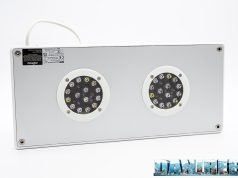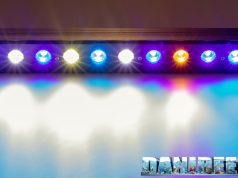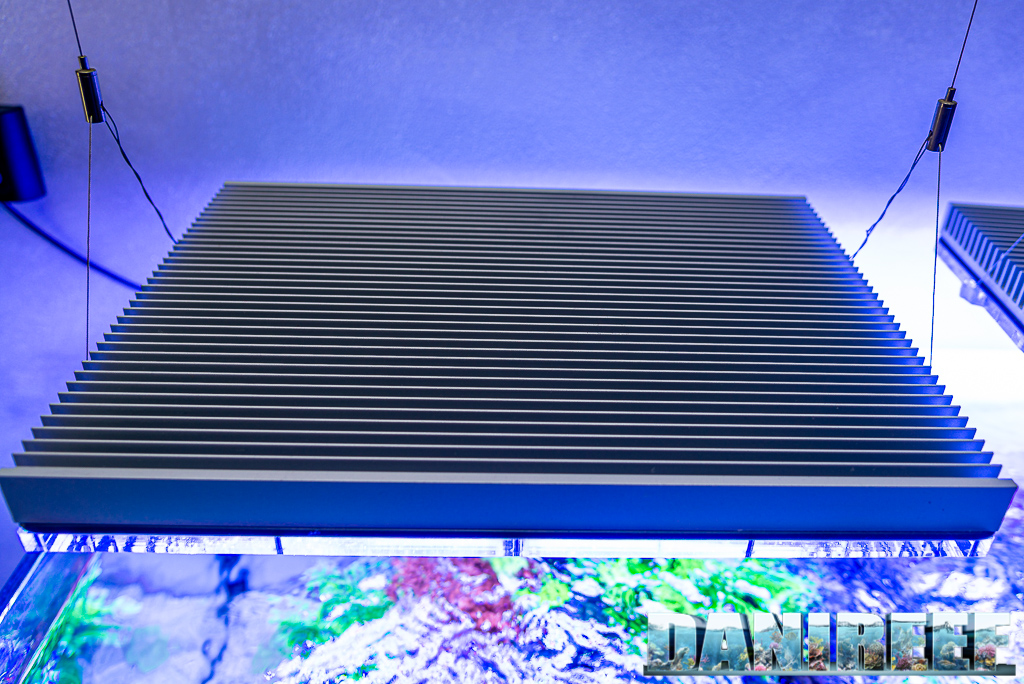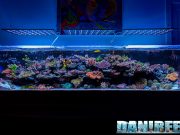
After two years we have the possibility to test in depth a new sample of the LED Aqamai LRM ceiling light, now ready too compete in the mare magnum of ceiling lights, so we’re going to submit it to our test in the DaniReef LAB.
This article is also available in: italiano
The ceiling light is very similar to the one we tested back in September 2017 (here our article), and it was great, but after two years the LED are surely changed, influencing expressed efficiency and power, but what is definitely changed is that now we have a professional system called DaniReef LAB, that uses the ultra professional probe Apogee Quantum Meter MQ-510.
Technical Characteristics of the Aqamai LRM
The LED are of 8 different coloration and they are divided in 6 channels. The total ammount is of 15 LED for each cluster. The “cool white” are pretty interesting: they’re 6 Nichia NVSW219C of CRI > 70 and 180 lumen/watt, a very high value.
Other LED complete the selection: a couple of UV LED by SemiLEDs of 405 nm, 4 Indigo always by SemiLEDs of 415 nm, 6 Royal Blue by Nichia NCSC219BT (very beautiful, I have to say), 6 Blue NichiaNCSB219BT, 2 Green Nichia NCSG219BT, 2 Red-A Nichia NCSR219BT and finally 2 Red-B OSRAM Oslon SSL.
- Power: 100 w
- Dimensions: 36x16x2(h) cm
- Selling price: 465 euro including VAT

Construction
The Aqamai LRM is so well built to be almost perfect, I would say. Very thin, it has a cooling system that is based on the temperature of the LED. If the temperature is too high, before it can damage the LED, the ceiling light switches into standby. This can happen when the ceiling light gets dirt and some dust accumulates in the outlet ducts, but in this case the cleaning of the light is enough.

The Programming
The ceiling light can be used through an app available for Apple or Android and it works with the wifi network created by the ceiling light itself. Compared to the previous model you can associate this wifi with your home network, so you’d be able to control your ceiling light directly from your device, without choosing the specific network. This feature has been added several months ago, so your old ceiling lights can also be controlled in this way. The app works very well and it’s very easy to use. It has various pre-set programs depending on the corals in the tank, SPS or LPS.

Here above there’s the manual control as it appears on an iPad: the two sliders represent the power provided and the two circle selectors the color gradation.

All the values we measured and our working method DaniReef LAB are on page two.













